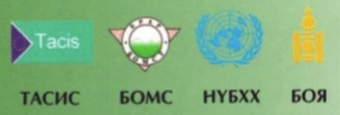By David South, Development Challenges, South-South Solutions

In the past, African entrepreneurs were extremely limited in the options for funding their plans. They had to rely on often ineffective national banks or local networks based on political, tribal or family connections to secure funding for enterprises. That has now changed, and there is an explosion in new thinking on business start-ups and how best to help grassroots entrepreneurs.
Concepts such as socially responsible investing, social enterprises and fair trade have opened up new frontiers for business development. All focus on the so-called triple bottom line: people, planet, profit. Economist Milton Friedman’s refrain that the only social responsibility of business was to increase profits, is being proven wrong. Some even go as far as to say social enterprise is the model for the 21st century.
“There’s lots of money to be made here,” said James Baderman of What If, an innovation company in the UK that employs 300 people and devotes 10 percent of its profits to helping social enterprises develop and grow. “There are huge opportunities; just look at the double-digit growth in fair trade and organic goods over the past decade. Consumers are increasingly making choices based on the ethical nature of products.”
Many in the social enterprise movement believe breaking the cycle of poverty and economic stagnation requires more than charity; it requires the creation of sustainable businesses that will pay local taxes and employ local people. They have also adopted and adapted the techniques used by multinational companies to improve the desirability of their products. A key part of these new socially responsible businesses is branding and marketing.
In Kenya, the UK’s Traidcraft (www.traidcraft.co.uk) – an organization that fights poverty through a wide range of trade-related activities combining a development charity with a trading company – is working with the Kenya Organic Agriculture Network to develop markets for Kenyan herbs, spices and related products in local and international markets. These include gums, resins (e.g. frankincense), herbs such as coriander, oregano, garlic and lemon grass; spices such as paprika, chillies, rosemary, lemon balm, and essential oils such as pepper tree oil, sinoni oil, and megalocapus oil – all grown in marginalised, arid areas.In another development focused on Kenya – but applicable across Africa – is being led by the UK-based Mark Leonard Trust (http://markleonard.net/). Called the Mainstreaming African Crafts project, it seeks to boost demand for Kenyan craft products in the UK market. It will build demand by focusing on growth areas (such as baskets, jewellery, leather), emphasizing the distinctiveness of African craft products and support product development in line with identified market trends. The aim is to launch a branded Kenyan product range at an international trade fair in 2008.
Along with improving the branding and marketing of social enterprises and fair trade businesses, funding options are becoming more varied. One new source of funding for budding social entrepreneurs is the William James Foundation’s 4th Annual Socially Responsible Business Plan Competition. It awards winners who develop business plans that blend people, planet and profit together with over US $40,000 in cash and expert advice to make sure it is spent well. Past winners have included business ventures as varied as an Afghan company that sends SMS text messages on security alerts, to others making hand-made organic clothing and portable vaccine packs for remote areas.
“We’re at a tipping point wherein the entrepreneur who builds in long-term values of sustainability is the one who will be successful,” said Ian Fisk, executive director of the William James Foundation and a long-time sustainable business activist through Net Impact (http://www.netimpact.org/index.cfm). “Most of what people think of as environmental and social activism in business is simply long-term thinking about energy costs and human resources. There are thousands of good ideas out there. The foundation wants to find those that are attached to solid business plans and help them succeed.”
The success of this approach has also attracted the attention of multinational companies like the oil company Shell. At the Shell Foundation (www.shellfoundation.org), they look at all the enterprises they support from a hardnosed, business perspective. Rather than seeing a producer who needs to produce, they look first at the market and the consumer, and then work backwards to get the producer to make the appropriate products that will sell. “No micro-enterprise is sustainable unless there is a viable route to market,” said Sharna Jarvis, Programme Manager for the Shell Foundation. “The problem with the standard model for micro-finance is that it begins with the producer, not the consumer. It is all about what someone wants to make – there is not enough emphasis on whether anyone will buy it.”
A new internet search engine has also been launched that is seeking a new way to create a steady flow of funds to nonprofit enterprises working to reduce poverty. Called GoodSearch (www.GoodSearch.com), it plows 50 percent of its advertising revenue (about a penny a search) back into nonprofits selected by its users. Powered by the well-known portal Yahoo!, if for example 1,000 supporters just searched twice a day, it would raise US $7,300 a year for an organization.
Published: February 2007
Resources
- The Fairtrade Foundation (FTF) helps farmers and other producers to earn a decent living and obtain good healthcare and education. Fair Trade Resource Network: http://fairtraderesource.org/about.html
- Unltd (pronounced Unlimited), a charity supporting social entrepreneurs: www.unltd.org.ukExcellent resource to link with branded social enterprises and all the resources required to get started: www.socialenterprise.org.uk
- Equitrade helps businesses in poor countries to develop finished or part-finished products to sell in rich countries: www.equitrade.org
- The 4th Annual Socially Responsible Business Plan Competition is open to for-profit business (or business ideas) with at least one member who is a current student or has graduated within the past five years.
- For more information contact: www.williamjamesfoundation.org or email ian.fisk@williamjamesfoundation.org.
https://davidsouthconsulting.org/2021/02/04/cuban-entrepreneurs-embracing-changes-to-economy/
https://davidsouthconsulting.org/2022/10/20/ghana-oil-rich-city-sparks-entrepreneurs-and-debate/
https://davidsouthconsulting.org/2022/11/15/indonesia-best-for-entrepreneurs/
https://davidsouthconsulting.org/2021/02/11/turning-street-children-into-entrepreneurs/

Development Challenges, South-South Solutions was launched as an e-newsletter in 2006 by UNDP’s South-South Cooperation Unit (now the United Nations Office for South-South Cooperation) based in New York, USA. It led on profiling the rise of the global South as an economic powerhouse and was one of the first regular publications to champion the global South’s innovators, entrepreneurs, and pioneers. It tracked the key trends that are now so profoundly reshaping how development is seen and done. This includes the rapid take-up of mobile phones and information technology in the global South (as profiled in the first issue of magazine Southern Innovator), the move to becoming a majority urban world, a growing global innovator culture, and the plethora of solutions being developed in the global South to tackle its problems and improve living conditions and boost human development. The success of the e-newsletter led to the launch of the magazine Southern Innovator.
https://davidsouthconsulting.org/2021/03/05/southern-innovator-issue-2/

This work is licensed under a
Creative Commons Attribution-Noncommercial-No Derivative Works 3.0 License.
ORCID iD: https://orcid.org/0000-0001-5311-1052.
© David South Consulting 2023





















You must be logged in to post a comment.